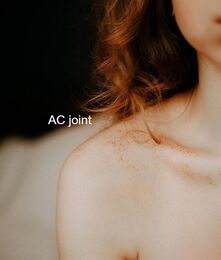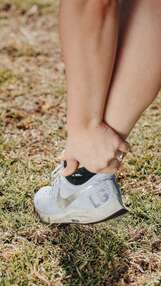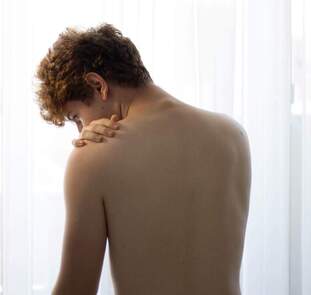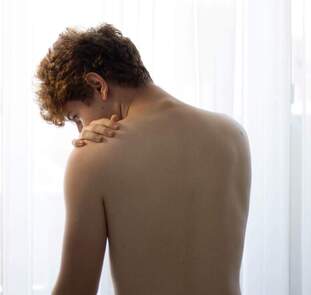|
The decision to have surgery following an injury is a serious and complicated one. It can be difficult when navigating the minefield of information you receive to know what is the right pathway for you. Unfortunately, the answer is not always obvious which can be confusing. To ensure that surgery is right for you, here are a few questions it pays to ask yourself and your medical team before making a decision. How much will surgery cost and will I need to take time off work?
One of the major downsides of surgery is that you will often need to take time off work to recover, resulting in lost income. The cost of the surgery itself may not be completely covered by your insurance, particularly for elective procedures and you will often need to have physiotherapy afterwards. The cost of surgery can really add up, and if you can achieve similar results with physiotherapy alone, you might find yourself in a much better financial situation. What are the potential complications and success rates for your surgery? All surgeries come with risks and potential complications, the probability of these will vary depending on the type of surgery, your age and general health. It is also important to compare the success rates of surgery with a period of physiotherapy treatment. Optimal surgical outcomes still often depend on effective post-surgery management, which can be an argument for considering physiotherapy first. In some cases, however, healing simply will not occur without surgical intervention and physiotherapy will have little success in resolving the issue. What are your post-surgical goals? Not everyone wants to ski down a mountain, but for some, being able to push and trust their bodies is important for both their income and quality of life. Surgery that aims to repair damaged structures might be the right decision for someone who has high demands on their body, but not for another person who isn't very active. Setting your goals for your body can help to guide your decision making process. Before making any major decisions, it is important to consult your medical, surgical and physiotherapy team to ensure you are well educated in all the risks and rewards of undergoing surgery.
0 Comments
What is it? The AC (acromioclavicular) joint is a thick fibrous joint that connects the top of the shoulder blade to the outer end of the collarbone. The joint is required to be strong and supportive and is the primary way in which weight-bearing forces are transferred from the arm to the rest of the skeleton. The joint is connected by three strong ligaments, the acromioclavicular, corococlavicular and corocoacromial ligaments. How does this injury occur?
The primary mechanism that will cause this joint and its ligaments to be injured is a force that separates the shoulder away from the collarbone, usually in a downwards direction. This can occur from a fall into the ground where the top of the shoulder hits the ground first, a rugby tackle or a fall onto an outstretched hand. As with all injuries, there are many variations in severity and a grading system has been developed to classify AC joint injuries. What are the symptoms? After an AC joint injury, there is usually immediate pain on the top of the shoulder, often with swelling and bruising. There is usually some loss of movement of the shoulder and pain from putting weight through the arm or carrying heavy objects. In severe cases, there is a visible lump on top of the shoulder known as a ‘step deformity’, where an obvious height difference can be seen between the top of the shoulder and the collar bone. There is frequently pain felt when reaching across the body, such as when putting on a seatbelt. To confirm the diagnosis, your physiotherapist can perform some clinical tests and sometimes an X-ray can help to grade the severity of the injury. The classification that would be given to you by your physiotherapist or doctor helps to determine the optimal course of action for each injury. There are different classification systems, some use four grades and the other six. Injuries with a smaller number of ligament fibres being torn are given a lower grade classification, going upwards as further damage is incurred. Injuries classified as higher grades will require surgical repair. How can physiotherapy help? The role of physiotherapy in this case is to ensure the joint is supported and given a chance to heal naturally while maintaining strength and movement of the shoulder girdle. This is done initially by providing support to the joint. You may need to have your arm supported in a sling or brace for some of this time, or your physiotherapist can show you some taping techniques to add support. Most AC joint sprains take around six weeks to fully heal, although some patients report ongoing shoulder problems years later. For this reason, a comprehensive rehabilitation program is very important. More severe sprains or total separations may require surgery to stabilise the joint and treat any associated fractures. Surgical repair will also require a proper rehabilitation program afterwards. The "socket" of the shoulder joint is surrounded by a ring of flexible connective tissue, known as a labrum. This labrum increases the stability of the shoulder while allowing the joint to stay flexible. The long head of the biceps tendon has an attachment directly into the labrum, which is often a point where injuries occur. A tear of the labrum can occur in many locations, however the most common is at the point where the biceps tendon attaches. Usually, this tear follows a typical pattern and is referred to as a superior labrum tear, anterior to posterior (SLAP tear). How do they happen?
SLAP tears can be caused by trauma such as a fall onto an outstretched hand or can develop over time through repeated stress. Repetitive overhead activities such as throwing or painting can also gradually weaken the labrum over time and lead to a tear. What are the symptoms? Often if a SLAP tear develops over time, patients can be unaware they have sustained an injury at all and there is no significant impact on their pain or function. Pre-existing SLAP tears can however place more tension on the long head of the biceps tendon, leading to overuse disorders of that tendon as a secondary complication. When the tear occurs through a sudden action or trauma, symptoms can be more noticeable. Patients often notice pain deep in the shoulder joint with overhead shoulder movements, a feeling of weakness or a loss of power or accuracy with throwing activities. Some people may feel a popping or clicking sensation and occasionally the shoulder feels like it "gives way". In severe tears, the shoulder might feel unstable and be at increased risk of dislocation. How can physiotherapy help? Your physiotherapist can help diagnose a SLAP tear and send you for scans if needed. SLAP tears are graded by severity from 1 to 4 as a way to guide treatment. Physiotherapy is usually recommended as a trial for all tears before considering surgical repair and in many cases can effectively help patients return to their previous activities, symptom free. If physiotherapy is unsuccessful, surgical repair with a full rehabilitation program is then recommended. Surgery will either repair the tear or reattach the biceps tendon to the humerus (tenodesis). Following surgery, a period of rest in a sling is required before rehabilitation can begin. Essentially, the ankle consists of three bones, the tibia, fibula and talus, all held together by thick fibrous ligaments. The bottom parts of the tibia and fibula (shin bones) join together and surround the talus in such a way that it is able to rock forwards and back while providing stability and restricting the side-to-side movements. The ligaments holding the tibia and fibula together are large and thick, forming a syndesmosis. An injury to this area is known as a high ankle sprain. How do they happen?
A high ankle sprain can occur when your lower leg twists inwards while your foot is planted on the ground. The foot is typically pushed back and rotated outwards, putting excess pressure on the ligaments that hold the lower leg bones (tibia and fibula) together. This force can cause the syndesmosis to tear resulting in a gapping of the two bones, which can lead to significant instability of the ankle. This can happen simply from a fall, but more commonly while playing sports that involve running and jumping. This is also a common injury for downhill skiers. You are often unable to walk on your toes after this type of injury. What is the difference between a high and a low ankle sprain? A "normal" or low ankle sprain is a tear of the ligaments connecting the ankle to the foot, a syndesmosis tear (between the bottom of the tibia and fibula) is called a “high” ankle sprain. High ankle sprains are much less common than lower ankle sprains, accounting for only 1-11% of all ankle injuries. It can initially be difficult to tell the two injuries apart. To complicate things, a fracture of the ankle will also have similar symptoms. Your physiotherapist has a set of physical tests they can perform if they suspect a high ankle sprain. Ultimately imaging such as X-Rays or an MRI may be required to confirm the diagnosis. Why does correct diagnosis matter? High ankle sprains can take up to two times longer to heal than normal ankle sprains and require more immediate attention. Syndesmosis tears that are left untreated can result in chronic instability and pain, making them vulnerable to further injury in the future. Furthermore, if the separation of the tibia and fibula is severe enough, early surgery to fixate the injury with a screw or a "tightrope" to pull them back together may be required. What is the treatment? As mentioned, severe and unstable tears may require surgery, but most syndesmosis tears will need to be put into a supportive boot for around 4-6 weeks. Following this period a graduated rehabilitation program of strengthening, mobilization, balance, control and agility will need to be commenced before your ankle will be back to its pre-injury level of function. This can take up to 6 months in some cases. What is the labrum of the shoulder? The shoulder is a remarkably mobile joint, however this flexibility comes with the cost of less stability. The glenohumeral joint, where the upper arm meets with the shoulder blade is a ball and socket type joint. The surface area of the ‘socket’ part of the joint (the glenoid fossa) is much smaller than the ball part of the joint (the head of the humerus). A fibro-cartilaginous ring called a labrum surrounds the edge of the glenoid fossa which acts to increase both the depth and width of the fossa. This labrum provides increased stability and is also the attachment for a part of the biceps muscle via a long tendon. The labrum can provide flexibility and stability that a larger glenoid fossa might not be able to, however being a soft structure it is prone to tearing which can be problematic. What causes the labrum to tear?
The most common way the labrum is torn is through a fall onto an outstretched arm or through repetitive overhead activities such as throwing or painting, as the repeated stress on the labrum can cause it to weaken and tear. Suspected labral tears can be diagnosed in a clinic by your physiotherapist through a series of tests, however, an MRI is usually required to fully confirm the presence of a labral tear. Labral tears are classified into different grades, which are determined by their location and severity. This grading is used as a guide to help determine the correct treatment. What are the symptoms of a labral tear? A labral tear is often associated with other injuries, such as a rotator cuff tear, which can make the clinical picture a little confusing. Commonly there will be pain in the shoulder that is difficult to pinpoint and the pain will be aggravated by overhead and behind the back activities. Severe labral tears can lead to instability and can also be related to dislocations of the shoulder. How Can Physiotherapy Help? The severity and grade of the labral tear will guide treatment. Smaller tears can be treated with physiotherapy that is aimed at increasing strength and control of the shoulder. Other tears may require surgical repair after which physiotherapy is an important part of treatment to rehabilitate the shoulder. The shoulder is a fascinating joint with incredible flexibility. It is connected to the body via a complex system of muscles and ligaments. Most of the other joints in the body are very stable, thanks to the structure of the bones and ligaments surrounding them. However, the shoulder has so much movement and flexibility that stability is reduced to allow for this. Unfortunately, this increased flexibility means that the shoulder is more vulnerable to joint dislocations. What is a dislocation and how does it happen?
As the name suggests, a dislocated shoulder is where the head of the upper arm moves out of its normal anatomical position to sit outside of the shoulder socket (the glenoid). Some people have more flexible Joints than others and will, unfortunately, have joints that move out of position without much force. Other people might never dislocate their shoulders unless they experience a traumatic injury that forces it out of place. The shoulder can dislocate in many different directions, the most common being anterior or forwards. This usually occurs when the arm is raised and forced backward in a ‘stop sign’ position. What to do if this happens The first time a shoulder dislocates is usually the most serious. If the shoulder doesn’t just go back in by itself (spontaneous relocation), then someone will need to help to put it back in. This needs to be done by a professional as they must be able to assess what type of dislocation has occurred, and an X-ray may need to be taken before the relocation happens. A small fracture can also occur as the shoulder is being put into place, which is why it is so important to have a professional perform the procedure with X-Ray guidance if necessary. How can physiotherapy help? Following a dislocation, your physiotherapist can advise on how to allow the best healing for the shoulder. It is essential to keep the shoulder protected for a period to allow any damaged structures to heal as well as they can. After this, a muscle strengthening and stabilization program can begin. This is aimed at helping the muscles around the shoulder to provide optimum stability and prevent future dislocations. The information in this article is not a replacement for proper medical advice. Always see a medical professional for an assessment of your condition. What is it? Shoulder instability is a term used to describe a weakness in the structures of the shoulder that keep the joint stable, which can lead to dislocation. As one of the most mobile joints in the body, the shoulder maintains stability through a balance of support between the dynamic structures (muscles and tendons) and static structures (ligaments and joint shape). Shoulder instability most often occurs in one of two directions, anterior (forward) or posterior (backwards). Anterior instability or dislocations are more common than posterior. What are the symptoms?
The most noticeable symptom of shoulder instability is dislocation or subluxation of the joint. This is often accompanied by pain, clicking sensations, a feeling of instability and in some cases weakness, and pins and needles in the arm. Many patients report a feeling of apprehension or instability, as if ‘something is not quite right’. Posterior instability can also cause reduced range of movement and might mimic other common shoulder conditions, which need to be ruled out first. How does it happen? Shoulder instability can be classified as traumatic, occurring after an injury or atraumatic, where the shoulder is exceptionally flexible and prone to dislocations from everyday forces. Instability can also occur from chronic overuse where the shoulder joint is damaged slowly over time. Traumatic shoulder instability is the most common form. Often the joint is dislocated by a strong force and damaged, leaving it more unstable and vulnerable to future dislocations. Rugby and football players are commonly affected. However, dislocations can occur in the general public from something as simple as falling onto an outstretched hand. How can physiotherapy help? Shoulder instability is a complex condition and each person will have a different combination of causes and structural deficiencies. Physiotherapists are trained to identify issues of coordination, control and strength that may be contributing to instability and provide an extensive rehabilitation program. For some patients, surgery is recommended to help restore some static stability to the joint. However, this is not the best pathway for everyone. If surgery is indicated, a full rehabilitation program is recommended post-operatively for the best possible outcome. Helping patients to understand and manage their condition is an essential part of recovery. Physiotherapy is usually recommended as the first line of treatment before surgery and can have excellent outcomes, with or without going under the knife. |
Categories
All
|








